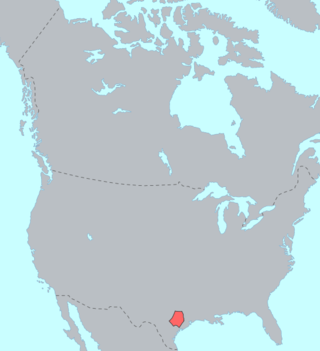Word-formation
Reduplication
Reduplication, [8] the process of creating a new word by repeating either a whole word or part of a word, is very productive in Vietnamese (as in other Austro-Asiatic languages), although not all reduplicative patterns remain fully productive.
Function and semantics
Its effect is to sometimes either increase or decrease the intensity of the adjective and is often used as a literary device (like alliteration) in poetry and other compositions, as well as in everyday speech.
Examples of reduplication increasing intensity:
- đau → đau điếng: hurt → hurt horribly
- mạnh → mạnh mẽ: strong → very strong
- rực → rực rỡ: flaring → blazing
Examples of reduplication decreasing intensity:
- nhẹ → nhè nhẹ: soft → soft (less)
- xinh → xinh xinh: pretty → cute
- đỏ → đo đỏ: red → reddish
- xanh → xanh xanh: blue/green → bluish/greenish
Form
| | This section needs expansion. You can help by adding to it. (May 2008) |
A type of assimilation known as tonal harmony is involved in Vietnamese reduplication. [9] The six tones are categorized into two registers: [10]
Register Tones Upper ngang, sắc, and hỏi Lower huyền, nặng, and ngã
The tones of all reduplicated words are always within the same tonal register (either upper or lower). For example, nhỏ "small" with the hỏi tone when reduplicated appears as nho nhỏ "smallish" with a ngang-toned reduplicant — both syllables are in the upper tonal register.
Vietnamese has several different types of reduplicative patterns including total, partial, initial, final, rhyming, and alliterative patterns involving only reduplicated material or both reduplicated material and affixation.
Reduplicant position. The resulting reduplicants can be either initial (preceding the base) or final (following the base).
- Initial reduplication:
- bự "big" > bừ bự "quite big" (less) (base: bự, initial reduplicant: bừ-)
- khắm "fetid" > khăm khắm "smelly" (base: khắm, initial reduplicant/affix: khăm-)
- Final reduplication:
- mập "be fat" > mập mạp "be chubby" (base: mập, final reduplicant/affix: -mạp)
- khóc "to weep" > khóc lóc "to whimper" (base: khóc, final reduplicant/affix: -lóc)
Total reduplication involves copying the entire word base:
- vàng " yellow" > vàng vàng "yellowish"
- vui "be joyful" > vui vui "jovial, fun"
- nói "to talk" > nói nói "to keep talking and talking"
- nghiêng "inclined" > nghiêng nghiêng "slightly slanted"
Partial reduplication involves copying only certain segments [11] of the word base. Partial reduplication typically involves the affixation of non-reduplicated segments. [12]
Affixation
Vietnamese has very limited affixation. Only prefixation and suffixation are attested. [13] A few affixes are used along with reduplication. Many affixes are derived from Sino-Vietnamese vocabulary and are learned part of the lexicon. Some examples (not an exhaustive list) follow.
Prefixes Prefix Gloss Examples bán- "half" bán nguyệt "semicircular, semi-monthly" (bán- + -nguyệt "moon"),
bán đảo "peninsula" (bán- + đảo "island")khả- "ability" khả kính "respectable" (khả- + kính "to respect"),
khả quan "satisfactory" (khả- + quan "to behold")lão- familiar (added to surnames) lão Thinh "ol’ Thinh, good old Thinh" (lão- + Thinh surname) phản- "counter to, against" phản cách mạng "counter-revolutionary" (phản- + cách mạng "revolution"),
phản chiến "anti-war" (phản- + -chiến "to fight")phi- "not" phi nghĩa "unethical" (phi- + nghĩa "righteousness"),
phi chính phủ "non-governmental" (phi- + chính phủ "government")siêu- "above, better" siêu thị "supermarket" (siêu- + thị "market"),
siêu đẳng "outstanding" (siêu- + đẳng "level")tăng- "over, high" tăng a xit "hyperacidity" (tăng- + a xit "acid"),
tăng can xi "hypercalcaemia" (tăng- + can xi "calcium")thứ- ordinal (added to numerals) thứ mười "tenth" (thứ- + mười "ten"),
thứ bốn mươi ba "forty-third" (thứ- + bốn mươi ba "forty-three")
Suffixes Suffix Gloss Examples -gia "profession" chính trị gia "politician" (chính trị "politics" + -gia),
khoa học gia "scientist" (khoa học "science" + -gia)-giả agentive tác giả "author" (tác "to create" + -giả),
học giả "scholar" (học "to learn" + -giả)-hóa forms causative verb a xít hóa "to acidify" (a xit "acid" + -hóa),
mỹ hóa "to americanize" (Mỹ "USA" + -hóa)-học "field of study" ngôn ngữ học "linguistics" (ngôn ngữ "language" + -học),
động vật học "zoology" (động vật "animal" + -học)-kế "measuring device" nhiệt kế "thermometer" (nhiệt- "warm" + -kế),
áp kế "manometer" (áp "get close, approach" + -kế)-khoa "field of study" nha khoa "dentistry" (nha- "tooth" + -khoa),
dược khoa "pharmacy" (dược- "drug" + -khoa)-sĩ "expert" hoạ sĩ "artist" (hoạ "to draw" + -sĩ),
văn sĩ "writer" (văn "literature" + -sĩ)-sư "master" giáo sư "professor" (giáo "to teach" + -sư),
luật sư "lawyer" (luật "law" + -sư)-viên agentive quan sát viên "observer" (quan sát "to observe" + -viên),
phối trí viên "coordinator" (phối trí "to coordinate" + -viên)
Ablaut
Vietnamese has the following tonal alternations (or tonal ablaut) which are used grammatically:
tone alternation đây "here" đấy "there" (ngang tone > sắc tone) bây giờ "now" bấy giờ "then" (ngang tone > sắc tone) kia "the other" kìa "yonder" (ngang tone > huyền tone) - (Nguyễn 1997:42-44)
Vietnamese also has other instances of alternations, such as consonant mutations and vowel ablaut. Different regional varieties of Vietnamese may have different types of alternations.





